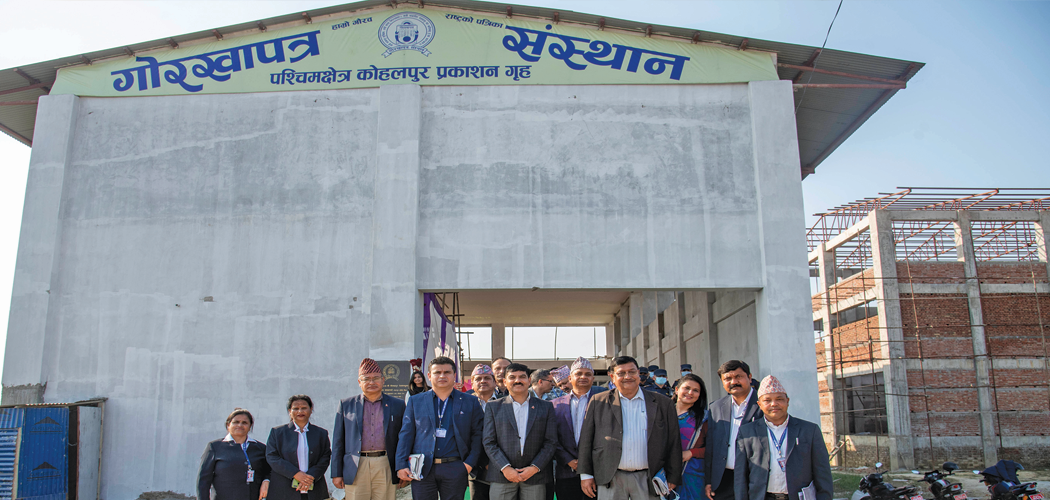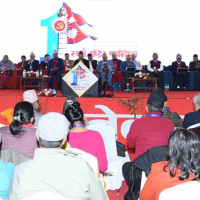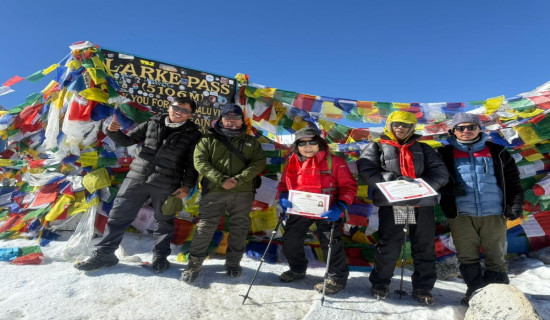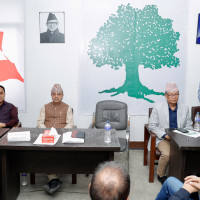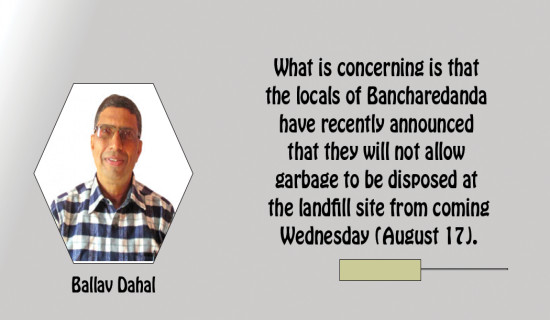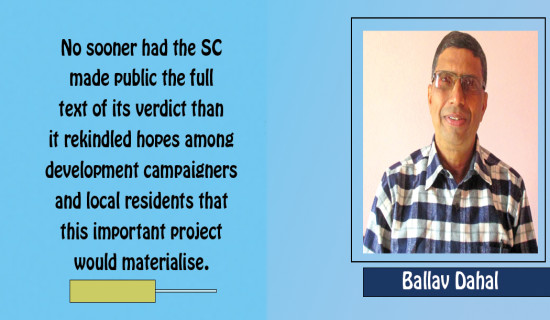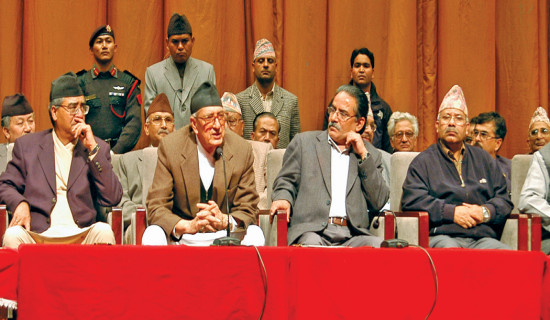- Monday, 15 December 2025
Preserving Gorkhapatra As A National Heritage
Today (Baisakh 24) is a very important day in the history of journalism in Nepal. In 1958 BS (1901 AD), Gorkhapatra, the sister publication of The Rising Nepal, came into existence. Initially, it was a weekly newspaper. The publication became bi-weekly from Asoj 29, 2000 BS while it started being published three times a week from Poush 8, 2003 BS. It turned into a daily from Falgun 7, 2017 BS. The newspaper has been serving the nation constantly over the past 121 years.
Gorkhapatra is the oldest state-owned national daily in Nepal. However, it is the nation’s second Nepali language newspaper after Sudha Sagar. Even more notable is- Gorkhapatra is among a handful of the oldest newspapers in South Asia to continue its publication to date. The pioneering publication holds much significance in terms of the development of journalism in the country. This is the first print media to offer practical knowledge and experience to aspiring Nepali journalists.
The daily has also played an important role in promoting various genres of Nepali literature like short stories, poems and dramas. The newspaper saw several famous Nepali litterateurs such as Balkrishna Sama, Siddicharan Shrestha, Gopal Prasad Rimal and Bhairav Aryal working with it.
When Gorkhapatra became the daily newspaper, different media models were being developed in the world. In 1964, Marshal McLuhan's "Understanding Media: The Extension of Man" was published. The book that contains the famous phrase 'the medium is the message' really influenced academics, authors and social theorists worldwide.
Although Gorkhapatra was founded during the Rana rule, it had to carry out a crucial responsibility of disseminating information about a host of issues, including agriculture, education and health, to the general public.
Gorkhapatra is a remarkable source of media development research in the country. The time-honoured newspaper needs to be recognised as a national heritage. It should be developed into a state media instead of being run as a government-controlled entity.
It also alerted people against different social anomalies and evils like corruption, and witchcraft, among others. The then rulers had also received feedback from people living around the country. Thus, it would not be an exaggeration to state that Gorkhapatra has been instrumental in informing people and empowering them, both socially and politically.
Besides, the paper has also been contributing to consolidating national unity and preserving the cultures and languages of different communities.
The daily was established at the initiative of Dev Shumsher Rana, who was the most liberal and reformist ruler among the Ranas. He aimed to serve the public through the dissemination of news, information, educational materials and inspirational messages. So, the publication was an important tool to bridge the gap between the rulers and citizens at a time when the level of people's awareness and the literacy rate was very low in the country.
Unlike other Rana rulers, Dev Shumsher was a progressive in his thinking and behaviour. In one of his decrees, he mentioned that any unjust decisions made in courtrooms should be exposed through Gorkhapatra. It is indicative of the fact that he was in favour of promoting rule of law and accountability. He also wanted Gorkhapatra to cover any lapses and carelessness of government officials and their absence from offices during duty hours.
Likewise, he encouraged the newspaper to highlight any incidents concerning injustice and violence reported in any part of the country. He never wanted to misinform people through Gorkhapatra. One of the guidelines issued by him read: 'Don’t publish our (the Prime Minister’s) praise and applause.’
It proves Dev Shumsher’s great sense of honesty, dedication and impartiality. But he remained in power for a short period. His successors, however, were not liberal like him. With the spread of information, people naturally become knowledgeable. And it is that knowledge that empowers them. The rulers were well aware of the fact that the increased level of awareness and education among citizens would be counterproductive to the Rana regime itself. That is why the government authorities used to thoroughly scrutinise the materials before getting them published in the newspaper.
Owing to its continuous service to the nation and the people, Gorkhapatra has still been synonymous with newspapers. Even amidst a tremendous growth in the media industry in Nepal, Gorkhapatra has been able to uphold its distinct identity among general readers. This is mainly because it maintains accuracy and credibility while disseminating information and views. It also pinpoints weaknesses and other problems seen in the development as well as other sectors and objectively assesses public policies.
Gorkhapatra is a remarkable source of media development research in the country. The time-honoured newspaper needs to be recognised as a national heritage. It should be developed into a state media instead of being run as a government-controlled entity.
The political parties and every successive government should extend their necessary support and cooperation for the development of Gorkhapatra and its sister publications.
It is sad to note that there has been a tendency among political parties and their sister organisations to use Gorkhapatra just to serve their partisan interests. This must stop. They need to own it and help contribute to taking it to newer heights.
With the rapid advancement of digital technology globally, Gorkhapatra should be fully digitised to catch up with the current trend. The country has made a great stride in the media industry since political change in 1990.
This has led to tougher competition among different media outlets. It is essential even for Gorkhapatra and its sister publications to upgrade their quality in terms of content and appearance to survive and grow in this competitive market. This, however, does not mean that this newspaper should be run only commercially. It has lots of responsibilities towards the nation and the people. So, it must be enabled to carry out such responsibilities in an effective manner.
(Dahal is Deputy Executive Editor of this daily)

